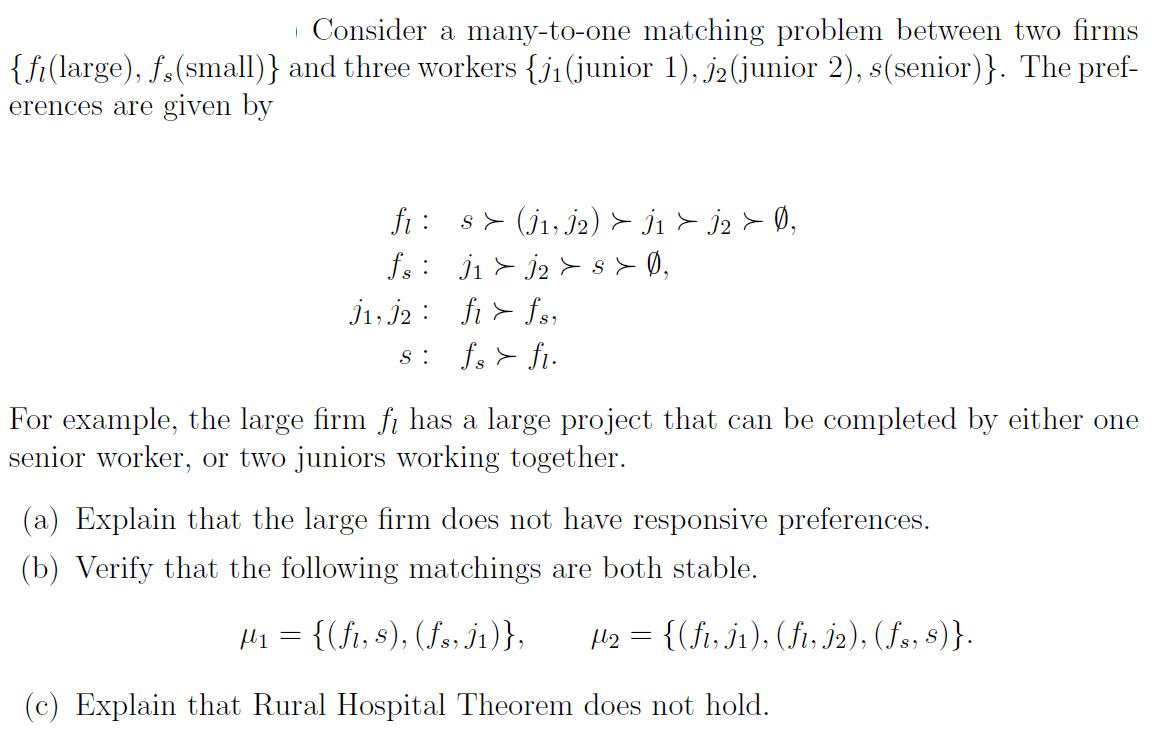Consider a many-to-one matching problem between two firms {fi(large), fs (small)} and three workers {j(junior 1), 2(junior 2), s(senior)}. The pref- erences are given

Consider a many-to-one matching problem between two firms {fi(large), fs (small)} and three workers {j(junior 1), 2(junior 2), s(senior)}. The pref- erences are given by fi: s (J1, 2) 1 > 2 > , fs: 11 12 s> 0, 11,12 f1 fs, S: fs > fi. For example, the large firm fi has a large project that can be completed by either one senior worker, or two juniors working together. (a) Explain that the large firm does not have responsive preferences. (b) Verify that the following matchings are both stable. P = {(fi, 8), (fs, j1)}, H = {(f, ), (f1, 12), (fs, s)}. (c) Explain that Rural Hospital Theorem does not hold.
Step by Step Solution
3.28 Rating (148 Votes )
There are 3 Steps involved in it
Step: 1
The image you have provided contains three parts of a question related to a manytoone matching problem between two firms and three workers with given preferences I will address each part separately a ...
See step-by-step solutions with expert insights and AI powered tools for academic success
Step: 2

Step: 3

Ace Your Homework with AI
Get the answers you need in no time with our AI-driven, step-by-step assistance
Get Started


